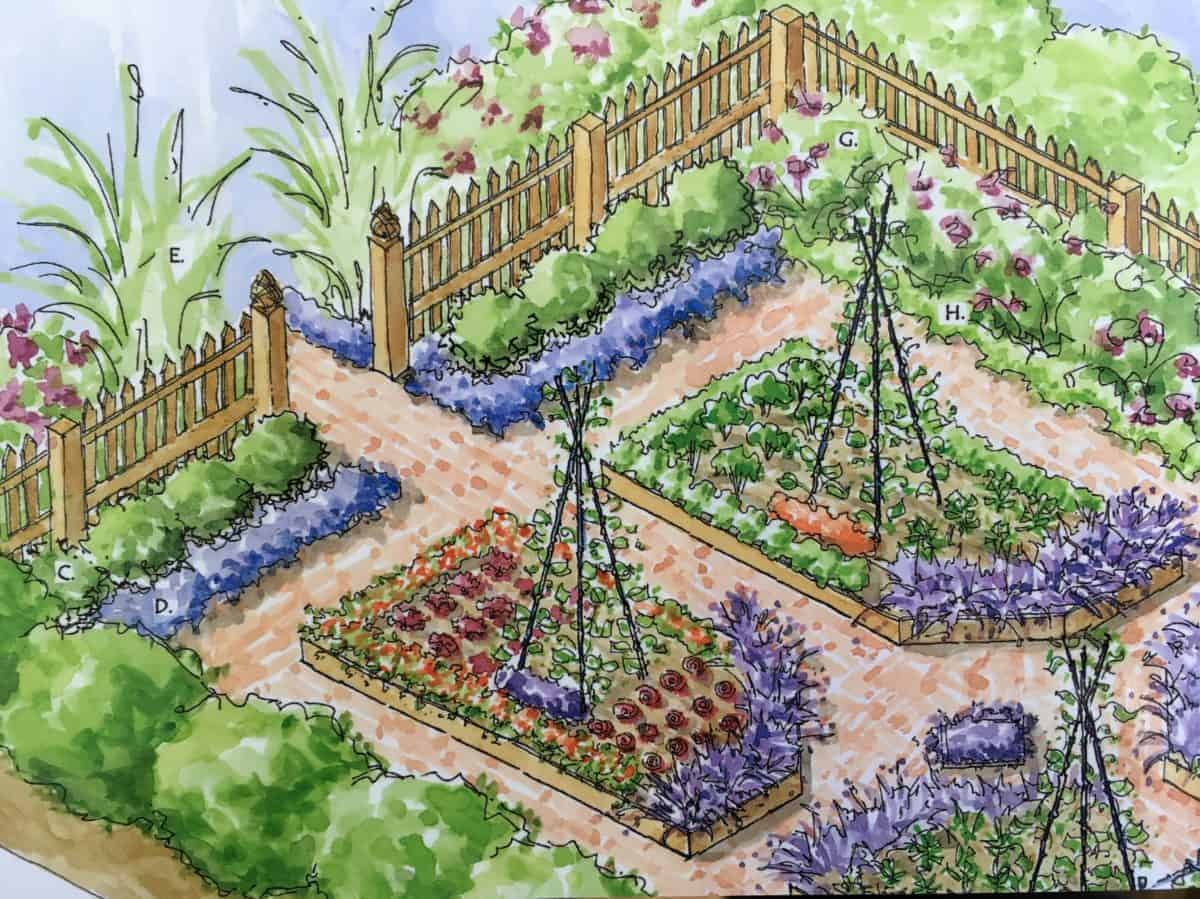
The texture of plants is often overlooked, but it is an important component of design. See our article on Flowers for Vegetable Gardens for further inspiration. Many are useful companion plants, and they are certainly much-appreciated for their nectar by insects, which encourages pollination of all of the crops.

Ornamental plants, which are usually included in a potager, can really come into their own here – orange calendula, pink echinacea, golden sunflowers, electric blue cornflowers, and nasturtiums in yellow, orange and red. Contrasting colours can create a real sense of drama – think of the white midribs and green leaves of Swiss chard, or try placing red cabbage next to the common green cabbage. Choosing Plants and Varieties for PotagersĬolour is an obvious consideration in an ornamental vegetable garden, and thanks to both nature and selective breeding there are an infinite number of colour combinations to choose from. Alternatively, you could use kitchen favourites such as cut-and-come-again lettuces or compact curly-leaved parsley to make them easier to harvest regularly. This has the added advantage of helping to confuse insect pests so they are less likely to attack your crops.Įdging beds or vegetable plot boundaries with low lavender or box hedges, cordon-trained berrying plants or step-over apple trees provides valuable permanent structure in the garden and helps to achieve the sense of rhythm within the design. Rhythm is best achieved with repetition of the same plant at intervals within the design, so if you’re growing lots of a particular type of vegetable or herb, instead of having one large clump of them, dot them around as accents or use them as edging. That focal point can be anything you like – a container overflowing with ornamental kale, an obelisk or archway dripping with beans, a towering globe artichoke – and pathways or lines of plants can be used to help draw the eye toward it. The main points to consider are rhythm, line, colour and texture, and it’s important to introduce a focal point to bring the whole design together. Principles for Creating a Beautiful Potager GardenĪ potager is simply a vegetable plot which follows the principles of garden design to create an area which is not only ornamental, but productive too. They imagine ruler-straight rows and unsightly muddy gaps where plants have been dug up, but I always tell them that they can have their cake (well, veg) and eat it too – the answer is to create a potager. People often say to me that they’d love to grow their own food at home, but that a vegetable plot would look out of place in their garden.


 0 kommentar(er)
0 kommentar(er)
